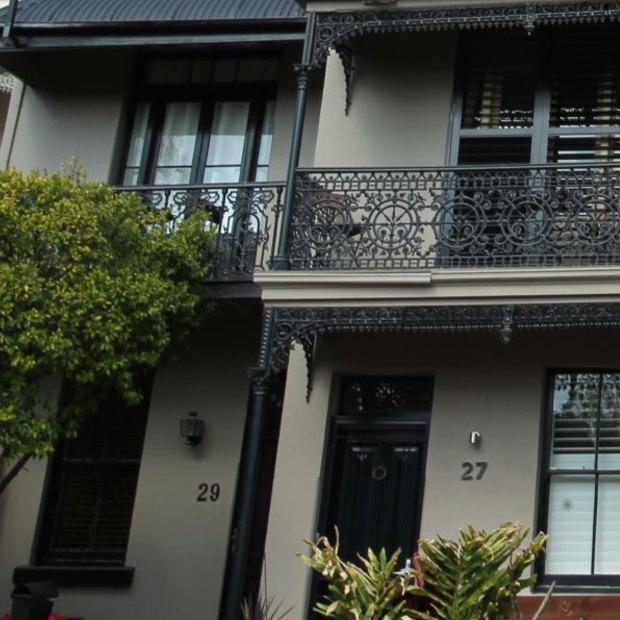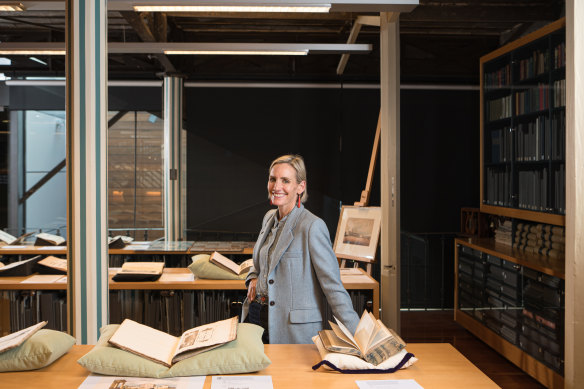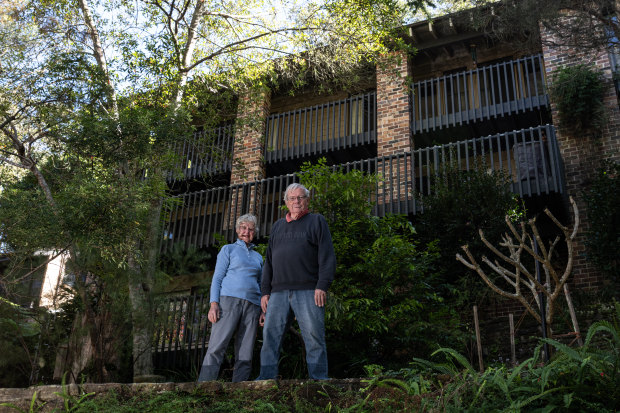This was published 1 year ago
They’re the ‘cockroaches’ of Sydney housing. But what will terraces look like in future?
The NSW government is pulling together a pattern book of designs for medium density buildings from two to six storeys that will attract fast-track approval.
By Julie Power

Terraces have stood the test of time in Sydney.Credit: Louise Kennerley
For NSW government architect Abbie Galvin they’re “the pillar of resilience”. For enthusiast and TV host Tim Ross, they’re the “cockroach of design”. The great Sydney terrace house is not only here to stay, but it also offers lessons that can be applied to today’s housing crisis.
The NSW government will soon search for the terrace of the future that will address a shortage of low- to medium-density affordable housing in Sydney’s missing middle close to public transport and jobs.
Galvin called terrace houses the great architectural survivor. They were adapted from an architectural pattern book brought to Australia in the early days of colonisation. They had stood the test of time, they were simple, and the layout worked just as well for rich families as poor.
Ross, an architectural enthusiast and host of ABC’s Designing a Legacy, says terrace housing is endlessly adaptable, seemingly indestructible, immediately recognisable, and it provides privacy while fostering community.
Like a cockroach, they never go away. “We can’t fall out of love with them,” Ross says.
Premier Chris Minns is on the verge of launching an international housing design competition for a Sydney terrace and a mid-rise apartment for the next century. The winners will be included in a “pattern book” containing about six architect-designed plans suitable for less complicated sites and fast-track approval.
The patterns will range from terraces, semis, manor houses and small apartments in blocks two to six storeys high. Some of the designs will be sourced from architects and builders; others will come from Galvin’s office.
Galvin says the answer to Sydney’s shortage of medium-density housing is in the past. Houses from pattern books of the past are dotted throughout suburbia.

NSW government architect Abbie Galvin visiting the Caroline Simpson Library of architectural plans.Credit: Flavio Brancaleone
“Many of the problems we encounter now are not new and the further back we can look, the further forward we can see,” she said.
The Caroline Simpson Library at The Mint in Sydney has hundreds of pattern books, from E. Gyfford’s Designs for Elegant Cottages brought to Australia by governor Lachlan Macquarie’s wife Elizabeth in 1809, to those provided in the 1950s by government home services.
They proved that combining “quality yet modest design, repetition and certainty of cost and time could get housing that was affordable to so many”.
Galvin says from settlement to the 1980s, buying a home or a flat built from a pattern, or a template, designed by an architect was common.
From the 1950s to the 1980s, renowned architects Harry Seidler, Ken Woolley for Pettit & Sevitt, Nino Sydney for Lend Lease and Michael Dysart for Habitat were involved in designing volume housing.
The average Australian could choose an affordable architect-designed home from a selection in a display village, and have it approved, built and ready to live in within a year.

A Nino Sydney plan that was popular across Sydney. Credit: Steven Siewert
On July 12, 1979, Hugh and Belinda Hopkins signed a contract for a “Habitat Split Level Three” by Dysart, to be built on a steep, bushy block in West Pymble. The cost, $77,800 plus about $4000 in extras, was equivalent to four years’ average salary at the time.
The Hopkins fell in love with the Dysart Habitat home at a display village. It was built to last with copper gutters and downpipes, and red cedar and tallowwood.
“It is a project home: It is single brick, but they are beautiful clinker bricks,” says Belinda. The finishes were simple but elegant. “We loved the door knobs.”
The clock was ticking. They wanted the home ready for the birth of their second child, a daughter born in June 1980. And it was.
As the city expanded and houses became bigger, Galvin said developers and building companies had more influence on volume housing. At the same time, fewer apartment blocks and terrace-style homes were built in the city.
The last “golden years for pattern books” were in the 1960s to early 1980s, write Dr Charles Pickett and Judith O’Callaghan in Designer Suburbs. Subsequent attempts to get architects engaged with volume housing were unsuccessful.

Hugh and Belinda Hopkins in their Pymble home where they have lived since 1980. The home was from a pattern design altered to fit their steep block.Credit: Nick Moir
What is a pattern book? Where does it come from?
Pickett, a historian and a former Powerhouse Museum curator, says the first pattern book dates back to Vitruvius in 40BC.
Galvin says pattern books had plans for everything from churches to pig sheds to terrace houses, even cheese-making rooms.
“People often think the pattern books were only for single houses. They weren’t,” Galvin says. They were used for building workers’ flats in The Rocks in the early 1800s.
She says an advantage of terraces is that, while the floor plan remains much the same, the footprint could be adapted for different budgets.
Some of the earliest examples of terraces in Sydney survive on the corner of Hunter and Macquarie streets. Later terraces added a front porch, an adaptation to better suit Australia’s climate.
Architect and commentator Tone Wheeler is one of the fiercest critics of pattern books.
He says: “There’s a huge variety of possible sites, and finding a pathway through the tortuous current controls to establish ‘standardised designs’ for those sites leads to the conclusion that a universal pattern book requires an almost infinite number of possible designs. Which defeats the purpose.”
Galvin says not all sites were suitable for a pattern book design. “If it is too complex, it’s not ‘patternable’,” she says.
“We are acknowledging architects’ expertise in that space. It is not trying to diminish what an architect brings to a project.”
Start the day with a summary of the day’s most important and interesting stories, analysis and insights. Sign up for our Morning Edition newsletter.